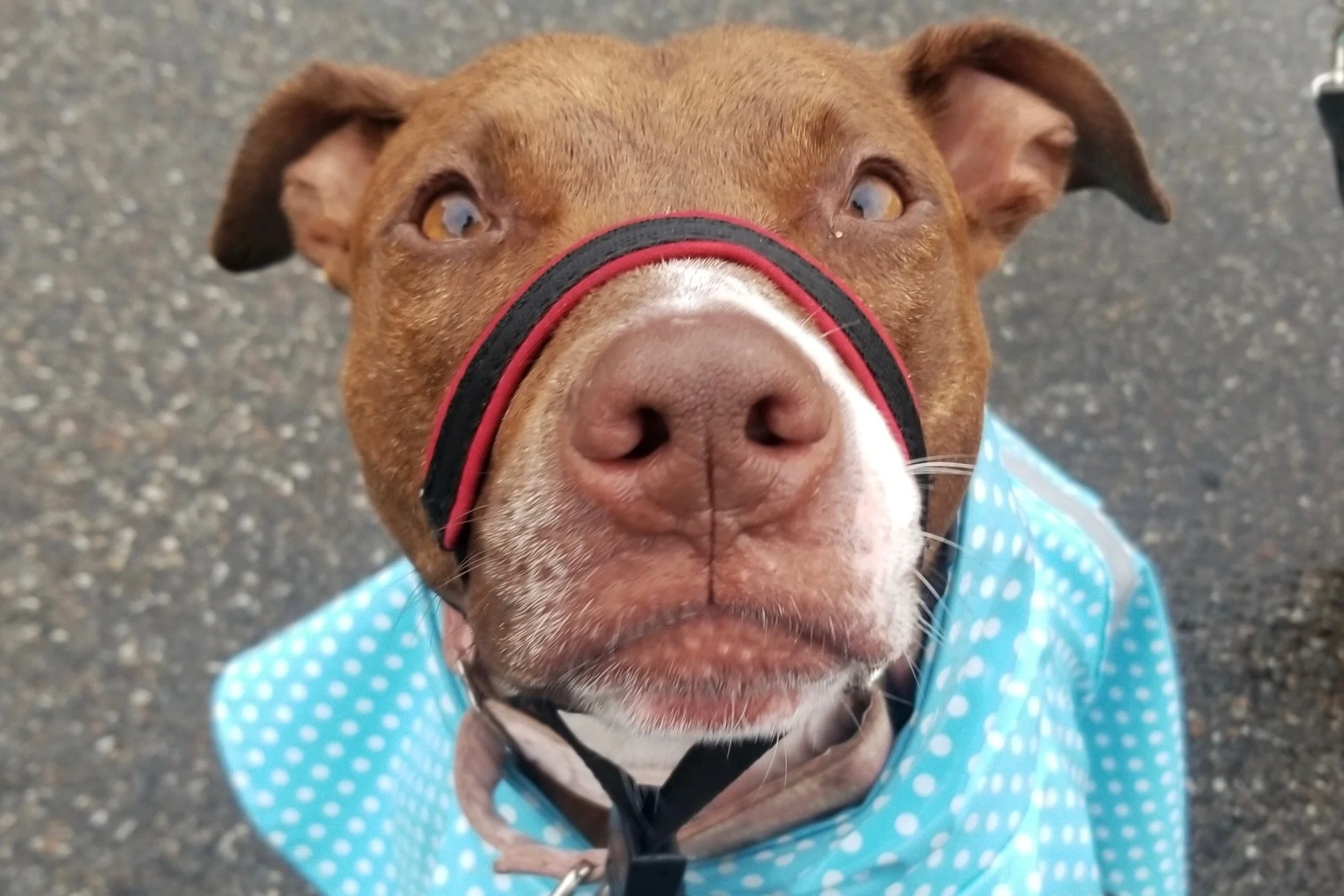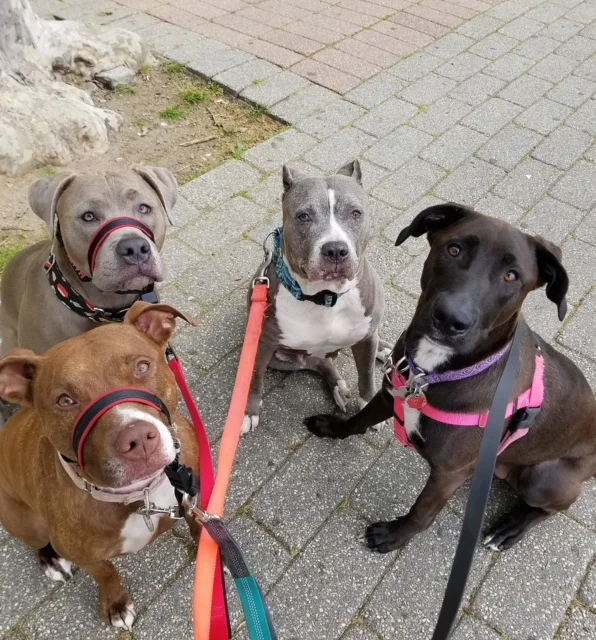Our friend the Halti
We often get asked "why is that dog muzzled?" when we walk Penny and Loosey on their haltis. My answer is almost rote at this point. "It's not a muzzle, it's a head collar. It helps with pulling by giving me control of her head. It's much safer because she pulls hard, and this gives me more control over the situation. She can still eat, drink, pant, and yes, bite, if she wanted to, with it on."
Photo by @prodigypuppy
The halti is a great tool. Like every other tool, it won't solve bad walking, but it is an unbelievably helpful tool to work with and use to your advantage to combat the problem. It has to be properly conditioned, and the dog has to be taught how to wear it. Then you can move into walking with it, and continue training while on walks. We practice "look" and reward for eye contact. When Loosey is alone, she is a perfect angel on the halti. When we do pack walks, she feeds off of Penny's nervous energy and both girls still pull a little bit, but it's so much more manageable and safe to have them on the haltis. I highly recommend them. (We also recommend a gentle leader, which is a bit more inconspicuous and also comes in a lot more colors and cute patterns, but doesn't have padding. Penny pulled into hers so hard it left a mark on her nose. The opti-fit halti that we have now has been really great, it has padding on the nose for extra comfort).
Below is how I condition the halti for my pups and fosters:
1) Let them smell it first. They can see that it's not anything scary coming at their faces. Don't let them play with it though, or they may think it's a toy.
2) Hold it open with your hands and hold a treat right on the other side. If your dog puts her nose up against it, they get the treat. (If your pup is super scared you can start with treats/clicker for just having it near their face first and work up to through it).
3) Now move the treat further, and the pup has to stick her face all the way in to get the treat. Don't attach it yet, but have the pup hold it for a second or two before giving the treat.
4) Put the halti all the way on the nose and clip it behind the head. Make it rain treats! Take it off after a minute or two.
5) Let the pup wear the halti around the house without the leash attached. Practice coming when called and treats.
6) Practice walking with the leash on in the house or hallway or yard, somewhere without all the distractions of outside. Make it rain treats again!
7) You're ready for a walk! Make sure you stop walking if your pup pulls, and only keep walking when she's by your side. Starting with a new tool can be a good reset for a dog who pulls. Teach that when the halti is on, we walk in heel. It takes a ton of patience, but keep at it, dogs thrive on consistency. If she's pulling, be a tree. Just stand still until the pulling stops, and start again with calmness. Practice 180 degree turns, so your pup has to keep paying attention to you. We also practice sitting at corners and when we stop. Carry very high value treats, like a dehydrated meat, to reward good walking.
Photo by @prodigypuppy
8) Don't expect perfection. There's no such thing as a magic fix. Any tool or trainer who promises instant results is lying to you. Everything requires work and consistency, so be ready to get out what you put in. None of my dogs are close to perfect (except Gert, but I can't take any credit for that), but compared to where they were (Penny had likely never seen a leash before which, coupled with her anxiety, was the perfect storm for a wrenched arm socket) I am proud every day. Penny will likely always pull a little bit on the leash, but as long as I keep seeing improvements we'll keep at it. So just keep going, keep working, and don't give up. You can do it!
Some more thoughts on the halti:
It comes with a built in back up to attach to a collar. I have had dogs pull it off their noses with a paw (Pig) or pull super hard/stubbornly if they see a dog (Seal), so it is unbelievably important to back it up to a collar. We like a martingale, so that if we are just hanging out we can take the halti off and have the pup on the martingale. (One of my MUST HAVES for fostering and my personal dogs is a martingale collar, which is just a collar that tightens when a dog pulls, so it can't slip over the head. Most collar companies make them!
It’s not for “correcting”. You can not and should not "correct" on a halti the way someone would on something like a prong collar. A sharp jerk to their face is, well, a sharp jerk to the face, so don’t do that. Try to avoid sharp movements, and instead focus on consistency. The dog will feel pressure if the dog is pulling. We hold the leash up toward the neck for a sit, and straight down for a down. Both have to be taught—we use both verbal commands and hand signals as well when teaching it.
I like the halti because it takes pressure off the neck. Penny especially has a very sensitive neck/trachea and has a bald patch on the front of her neck, most likely from a very tight collar/chain/something rubbing there hard and for a long time. If you put pressure on her throat (or if she drinks too fast) she coughs and chokes herself. So finding an alternative way to walk her that didn't include pressure on her neck was important to me.




